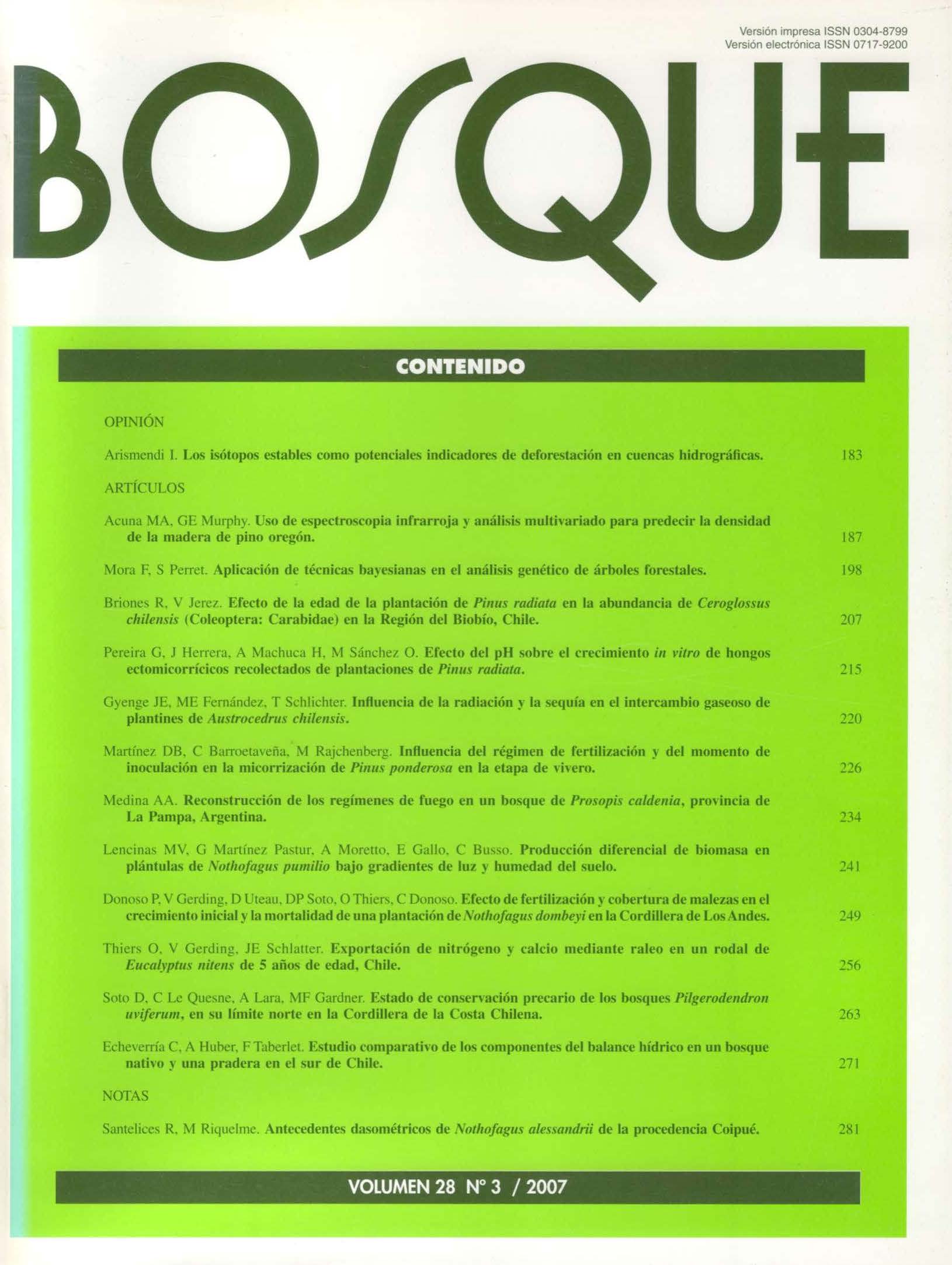Export of nitrogen and calcium through the thinning of a five-year-old stand of Eucalyptus nitens, Chile
Main Article Content
Abstract
The aim of the present paper was to assess the export of nitrogen and calcium in a five-year-old stand of Eucalyptus nitens (41°01’S y 73°27’ W; 200 m rise, Acrudoxic Hydric Hapludand red clay soil), with and without fertilization, due to the thinning with varying extents of biomass extraction (logs: only wood, trunks: wood plus bark, and whole tree). The plantation was established in 1996 and was fertilized (F) with phosphoric rock before planting, in the spring of the same year (NPK + microelements), the next year (NPK) and the third year (NP). A similar surface (0.25 ha) was defined as the control plot (T). The thinning of 700 trees ha–1 was considered, leaving a residual density of 800 trees ha–1 with the pruning of the lowest third of the crown. Prior to the thinning, the above-ground biomass in T was 95.6 Mg ha–1 (accumulation of: 434 kg N ha–1 and 306 kg Ca ha–1) and in F it was 121.3 Mg ha–1 (516 kg N ha–1 and 359 kg Ca ha–1). Roots represented 6.2% and 5.4% of the total biomass, respectively. The extraction of logs (only wood) exported 16-18% of the above-ground nitrogen and 5-6% of the above-ground calcium in the stand, whereas the extraction of whole trees took out 41-44% of the nitrogen and calcium. The bark was the biomass component that accumulated the most calcium, reaching almost three times as much as that in the wood. Retention of the bark in the site can be significant for the supply of this element during rotation.

